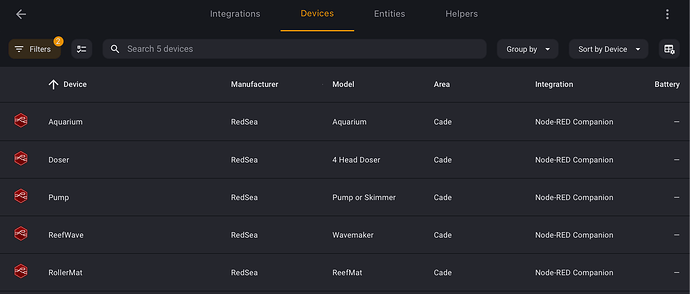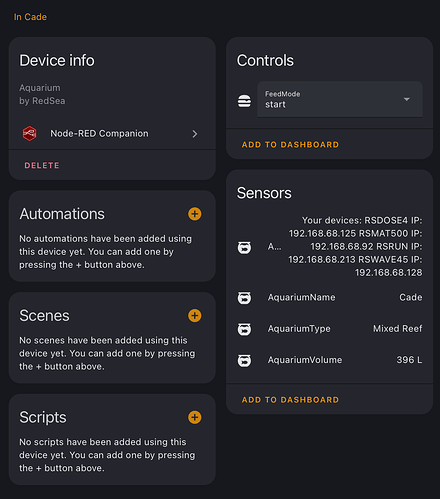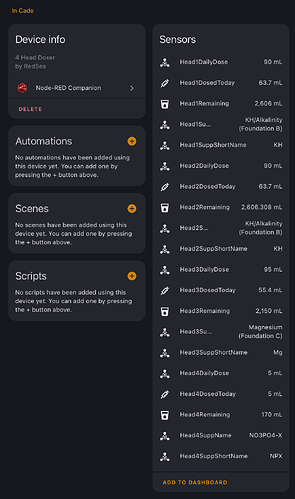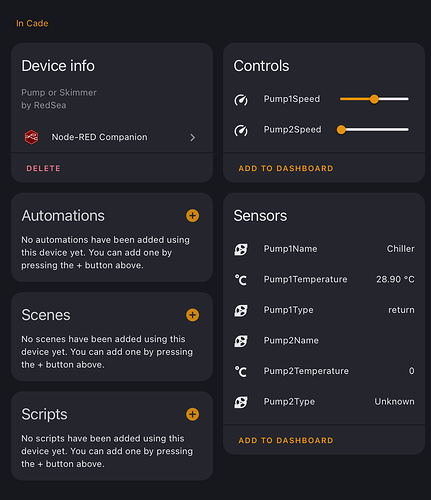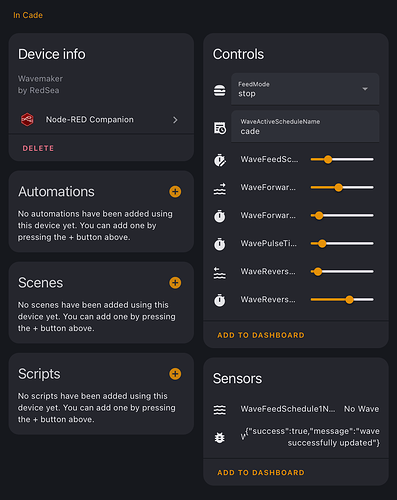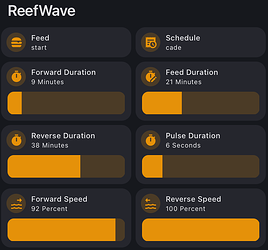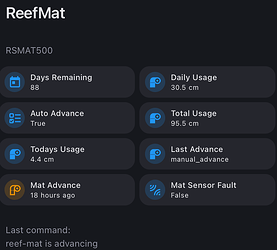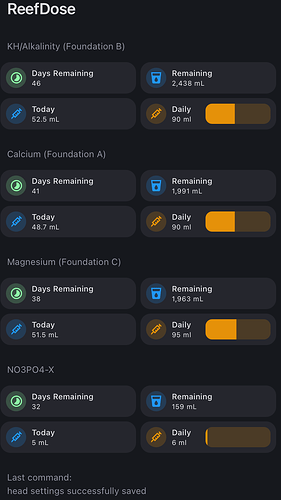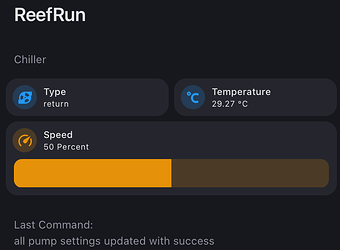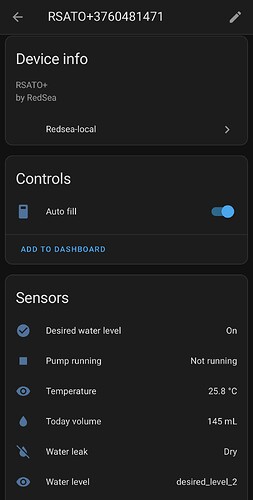That’s the rest.yaml indeed!
Yes sure, below the yaml from my representation in HA. This is part of a dashboard view which uses sections.
path: myTank
subview: false
type: sections
max_columns: 2
icon: mdi:fish
cards: []
sections:
- type: grid
cards:
- type: heading
heading: RSDOSE
heading_style: title
badges:
- type: entity
show_state: true
show_icon: true
entity: sensor.rsdose_heads
icon: mdi:heat-pump-outline
name: RSDOSE
color: state
- type: custom:mushroom-template-card
primary: 1 - {{ state_attr('sensor.rsdose_head1','supplement') }}
secondary: >-
{{ state_attr('sensor.rsdose_head1','auto_dosed_today') }}ml / {{
state_attr('sensor.rsdose_head1','daily_dose') }}ml
icon: mdi:heat-pump
entity: sensor.rsdose_head1
layout_options:
grid_columns: 2
grid_rows: 2
icon_color: >-
{% if is_state('sensor.rsdose_head1','on') %} green {% else %} red {%
endif %}
- type: custom:mushroom-template-card
primary: 2 - {{ state_attr('sensor.rsdose_head2','supplement') }}
secondary: >-
{{ state_attr('sensor.rsdose_head2','auto_dosed_today') }}ml / {{
state_attr('sensor.rsdose_head2','daily_dose') }}ml
icon: mdi:heat-pump
entity: sensor.rsdose_head2
layout_options:
grid_columns: 2
grid_rows: 2
icon_color: >-
{% if is_state('sensor.rsdose_head2','on') %} green {% else %} red {%
endif %}
- type: custom:mushroom-template-card
primary: 3 - {{ state_attr('sensor.rsdose_head3','supplement') }}
secondary: >-
{{ state_attr('sensor.rsdose_head3','auto_dosed_today') }}ml / {{
state_attr('sensor.rsdose_head3','daily_dose') }}ml
icon: mdi:heat-pump
entity: sensor.rsdose_head3
layout_options:
grid_columns: 2
grid_rows: 2
icon_color: >-
{% if is_state('sensor.rsdose_head3','on') %} green {% else %} red {%
endif %}
- type: custom:mushroom-template-card
primary: 4 - {{ state_attr('sensor.rsdose_head4','supplement') }}
secondary: >-
{{ state_attr('sensor.rsdose_head4','auto_dosed_today') }}ml / {{
state_attr('sensor.rsdose_head4','daily_dose') }}ml
icon: mdi:heat-pump
entity: sensor.rsdose_head4
layout_options:
grid_columns: 2
grid_rows: 2
icon_color: >-
{% if is_state('sensor.rsdose_head4','on') %} green {% else %} red {%
endif %}
column_span: 2

